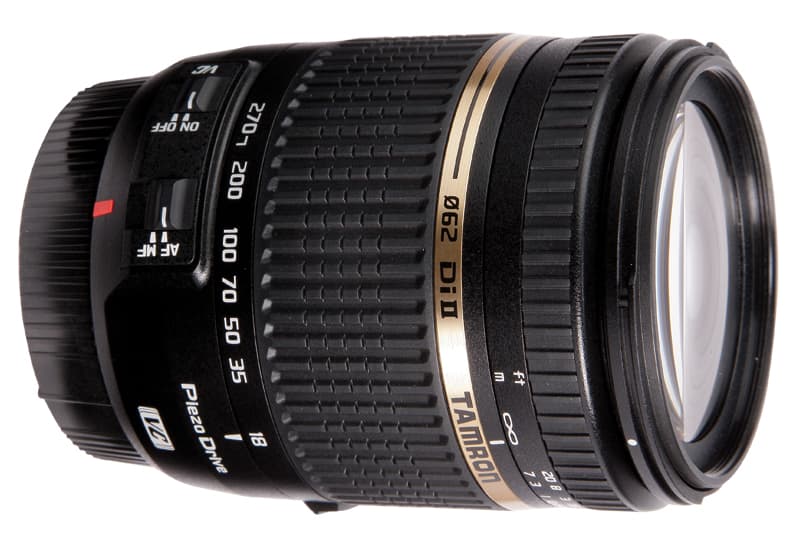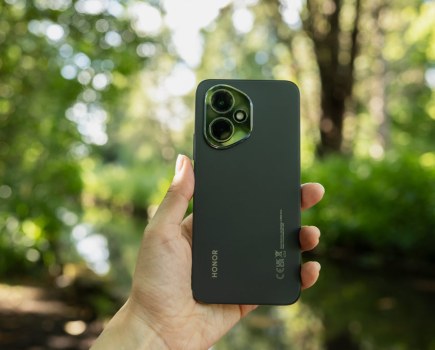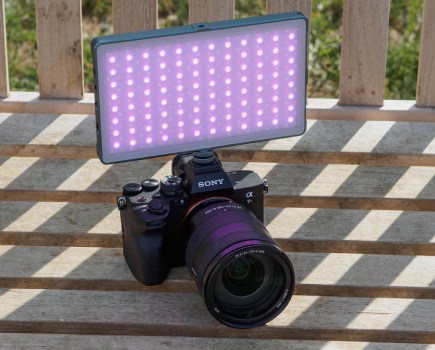Tamron’s new AF 18-270mm f/3.5-6.3 Di II VC PZD superzoom is all about speed. The introduction of a Piezo Drive (PZD) motor means the AF system should perform much faster and more silently than the previous Tamron 18-270mm model.
This isn’t the only improvement to the lens, though, as it is now 24% smaller than the old model, therefore taking up even less space in your travel bag.
Superzooms are a popular choice for photographers wanting an all-in-one lens when transporting a full kit bag is impractical. For many amateurs a superzoom may even be a default lens, with more specialist lenses an option only when the situation really demands it.
Tamron has a long history of producing popular superzoom lenses. The company offers not only an 18-200mm optic, but has also pushed the limits of superzoom lenses further with an 18-250mm and, in 2008, created the first 18-270mm version.
Features
The internals of this massive zoom lens are impressive, being made up of 16 elements in 13 groups. This includes a low dispersion (LD) front element, an anomalous dispersion (AD) element and three aspherical lenses to correct aberrations across the zoom range. The seven-blade construction has a maximum aperture of f/3.5-6.3 and a minimum of f/22-40.
The new Piezo Drive is noted among the abbreviations in the lens description with the letters PZD. The Piezo Drive is a piezoelectric internal autofocus motor.
A piezoelectric element within the motor is sent ultrasonic signals, which cause it to expand and flex. This isn’t uniform, though, so the otherwise rectangular element is twisted into an S-curve. At one end of the Piezo element is a metal tip that comes in contact with a rotor. As it pulses and flexes with the signal, the tip is moved against the rotor causing it to turn. This process is claimed to be faster, more accurate and quieter than a regular DC motor. Although all ultrasonic motor (USM) AF systems use a form of piezoelectric activity, there are key differences in the use of resonance and movement. Tamron also produces an Ultrasonic Silent Drive (USD) system, which is larger but offers even faster focusing.
The lens also includes powerful optical stabilisation in the form of Vibration Compensation (VC). This has been made lighter and more efficient than previous systems by reversing the position of the magnets and the coil. As the magnets are no longer on the moving element there is less load on the drive system and smaller, lighter magnets can be used. The claimed benefit is up to 4 stops on the available shutter speed, which is particularly handy at longer focal lengths and smaller apertures.
The lens focusing offers auto and manual settings but, on the Canon version tested, this does not allow for a manual-focus override in AF mode. When the zoom is extended the lens is increased to almost twice its length. To avoid lens creep, a lock is featured to hold it in place at its smallest size. The focal distances are marked on the focus ring with a minimum focus of 49cm available across the zoom range.
Build and handling

This lens is both shorter and thinner than the original 18-270mm, extending just 88mm, making it little larger than most standard 18-55mm zooms. It also weighs just 450g (100g lighter than its predecessor) thanks to the newly designed motors and smaller form.
The zoom ring takes up most of the body, with a lightly rubberised grip, and the focusing ring sits at the front of the barrel.
The focus ring has only a small rotation, which helps maintain fast AF speeds, although with such slight movements needed it is more difficult to focus manually. Clearly this is a lens designed primarily for AF operation.
Although it has a long extension, the zoom extends smoothly but with a satisfying amount of resistance. Lens creep isn’t an issue (at least as new) when left unlocked. The lens feels pleasant to use and is seemingly uncompromised by its smaller size.
Focusing, image sharpness and quality
Focusing
The speed of focusing with this Piezo Drive model certainly shows an improvement over the original 18-270mm lens, and there is no audible noise from the motor. It is quicker to lock on at wider focal lengths than towards the 270mm end, but remains reliable throughout. The Piezo Drive isn’t as fast as some USM lenses we have tested, but for such a small lens and at this price the performance is admirable.
The 49cm closest focus is a great feature, and by combining it with the longer focal lengths it means a 1:3.8 magnification can be achieved for close-up shots. The Vibration Compensation is really impressive and the lens appears noticeably steadier through the viewfinder than some more expensive models. The results confirm that using the stabilisation allowed sharp shots a full 4 stops below an otherwise achievable shutter speed.
Image sharpness and quality
There are signs of lens distortion, mainly at the extremes of the focal range, with fairly significant lens barrelling at the widest focal length. This turns to pincushioning from 50mm and becoming significant by the full 270mm extension. Purple and green fringing are also prominent at 18mm in areas of high contrast.
The lens has a definite sweet spot between f/8 to f/11, although performance at wider apertures is not far behind, with only a slight loss in sharpness at f/5.6 and even f/4 when the lens is at its widest focal length. Sharpness falls more significantly with smaller apertures, and settings beyond f/22 are best avoided throughout the focal range. Between 18mm and 200mm the lens maintains similar resolving performance on our chart, but resolution drops more significantly at the 270mm focal length.
Superzoom lenses are often criticised for their lack of sharpness and this was an issue on some early models. However, the technology in these modern lenses has gone a long way to correcting this.
When comparing the results taken on the Canon EOS 7D using both the Tamron 18-270mm and our standard test lens, the Sigma 105mm Macro, readings from our resolution chart test are noticeably softer with the Tamron. This was also seen in real-world comparisons of the results with similar images taken on Canon EF 70-200mm f/2.8L IS and 24-70mm f/2.8 L lenses – although these lenses cost nearly four times the price and weigh almost four times as much.
The use of Vibration Compensation appeared to have no visible effect on sharpness when used handheld at suitable shutter speeds compared with tripod use without stabilisation.


Images: These two images taken from exactly the same spot show the huge range of focal lengths on offer from this lens. Both images are at f/11
Resolution

We placed the Tamron 18-270mm f/3.5-6.3 Di II VC PZD on a Canon EOS 7D body and shot our standard resolution test chart. The images were taken at a range of focal lengths and apertures. As a control, the Sigma 105mm macro lens was also used at the same apertures.
Our verdict
As every photographer knows, prime lenses provide the best optical quality. A zoom lens has benefits, but the greater the zoom range the more compromises that have to be made on image quality.
The reason for choosing a superzoom is practicality – and for this single compact-lens solution there must be some concessions. The Tamron 18-270mm f/3.5-6.3 Di II VC PZD is not only the longest-range superzoom lens of its kind, but also the smallest.
The Piezo Drive motor has allowed for faster and silent focusing, although not to the speed of some USM models.
Handling has also been improved from the original version, and it has the same great stabilisation.
Our favourite feature, though, is close focusing. The image quality is not outstanding, although when used at mid-aperture sharp results are possible, and by avoiding the extremities of the lens images are kept relatively distortion-free.








